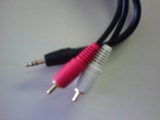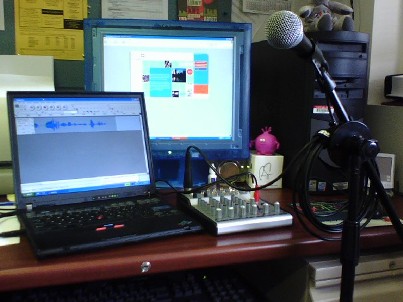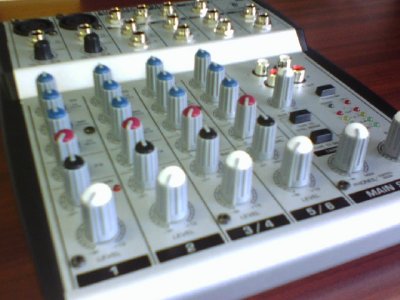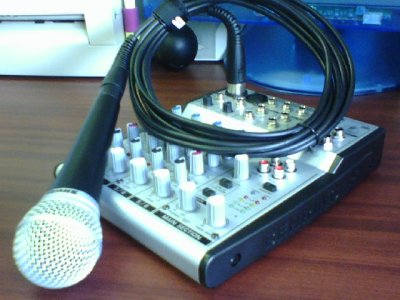I now have a microphone connected to my mixer, and the whole shebang is linked to my laptop through an RCA-to-1/8 cord. Here is a pic of the cord:

The black end connects to the laptop, and the red/white end connects to the mixer.
As luck would have it, someone here at CMU was disposing of a microphone stand simply because the plastic clip that holds the mic in place was broken. As my mics came packaged with their own clips that fit perfectly on the unwanted stand, I turned someone's trash into my treasure.
This is a picture of my desk-turned-recording-studio:

Note my beautifully salvaged microphone stand. Also note the Technology in the Arts Web site on my monitor. (Plug, plug, plug.)
Maybe it was annoying, but I walked around the office most of the day on Friday describing my mini podcast studio as "totally awesome." Not everyone shared my enthusiasm. I try to be professional about things, and what happens?
1) The guy that works across the hall from me leans into my office, notices the equipment, and says, "I have to ask." Yes, but I don't have to answer.
2) Jerry Coltin, CAMT's former executive director, tells me the USB mic that came with my computer will work just fine for podcasting. While this may be true, it won't look like I'm getting ready to produce the new Boyz II Men comeback album, which is exactly the look I'm going for.
3) Cary McQueen-Morrow, CAMT's current executive director, says I'm the biggest geek at CMU -- and that is like calling someone the ugliest person at the University of Pittsburgh. (By the way, that is ONLY a joke. As a West Virginia University fan, I'm obligated to say horrible things about Pitt.)
Next Week: Audio Interviews with CAMT Staff







